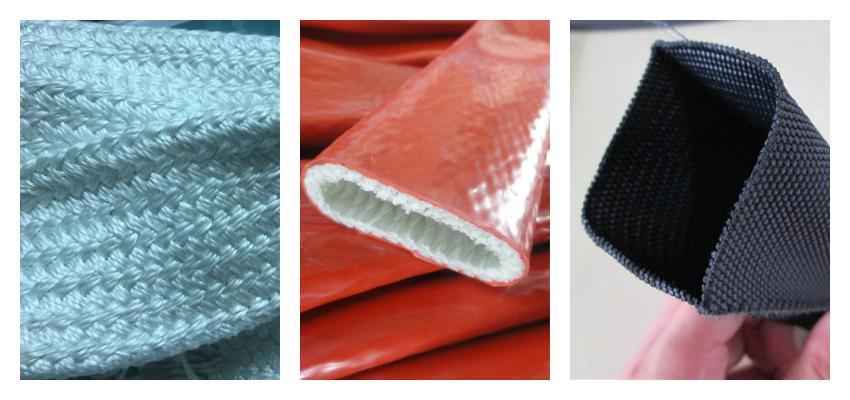Sự khác biệt giữa ống tay áo chống cháy bằng silicon Và ống tay áo nylon đối với ống thủy lực có thể được hiểu thông qua một số yếu tố chính:
Ống tay áo chống cháy bằng silicon : Được làm từ cao su silicon, thường được gia cố bằng sợi thủy tinh hoặc các vật liệu chịu nhiệt độ cao khác.
Ống tay áo bằng nylon :Được làm từ nylon, một loại polymer tổng hợp bền, đôi khi được pha trộn với các vật liệu khác để tăng cường tính chất.
Ống tay áo chống cháy bằng silicon : Được thiết kế cho khả năng chống cháy và chịu nhiệt độ cao . Bảo vệ ống khỏi ngọn lửa, tia lửa và môi trường nhiệt độ cao (ví dụ: lò công nghiệp, động cơ).
Ống tay áo bằng nylon : Tập trung vào bảo vệ cơ học chống mài mòn, vết cắt, va đập và tiếp xúc với tia UV. Phổ biến trong thiết bị xây dựng hoặc khai thác mỏ.
Silicon : Chịu được nhiệt độ lên đến 500°F (260°C) hoặc cao hơn, vẫn giữ được độ mềm dẻo khi chịu nhiệt.
Nylon : Thông thường có khả năng chống chịu lên đến 250°F (120°C) . Có thể tan chảy hoặc phân hủy ở nhiệt độ cao hơn.
Silicon : Chịu được dầu, nhiên liệu và nhiều loại hóa chất, nhưng có thể bị phân hủy khi tiếp xúc lâu với dung môi.
Nylon :Khả năng chống dầu và chất mài mòn tốt nhưng có thể hấp thụ độ ẩm, có khả năng dẫn đến sưng tấy hoặc yếu đi.
Silicon : Vẫn mềm dẻo trong điều kiện nhiệt độ khắc nghiệt nhưng có thể cồng kềnh hơn.
Nylon : Nhẹ và linh hoạt nhưng có thể cứng hoặc giòn khi tiếp xúc với nhiệt độ cao hoặc tia UV.
Silicon : Được sử dụng trong môi trường có rủi ro cao (ví dụ: hàng không vũ trụ, động cơ ô tô, nhà máy thép).
Nylon : Thích hợp cho môi trường khắc nghiệt có sự hao mòn vật lý (ví dụ: máy móc nông nghiệp, hệ thống thủy lực chịu ma sát).
Silicon : Nói chung đắt hơn do vật liệu chuyên dụng và chứng nhận (ví dụ: SAE J2308).
Nylon : Tiết kiệm chi phí cho mục đích bảo vệ chung.
Silicon :Thường đáp ứng các tiêu chuẩn an toàn phòng cháy chữa cháy nghiêm ngặt (ví dụ: thử nghiệm khả năng chống cháy ISO 15540).
Nylon : Ưu tiên khả năng chống mài mòn mà không cần chứng nhận chống cháy cụ thể.
Silicon : Có thể cần keo dán hoặc kẹp chịu nhiệt; tuổi thọ dài hơn ở môi trường nhiệt độ cao.
Nylon : Dễ dàng lắp đặt thông qua thiết kế trượt hoặc quấn; có thể cần kiểm tra thường xuyên trong điều kiện khắc nghiệt.
Chống tia UV/Độ ẩm :Silicone có khả năng chống tia UV vượt trội; nylon có thể cần xử lý chống ẩm.
Cân nặng : Nylon nhẹ hơn, có lợi khi cần cân nặng.
|
Tính năng
|
Ống tay áo chống cháy bằng silicon | Ống tay áo bằng nylon |
|
Sử dụng chính
|
Chống cháy/nhiệt
|
Mài mòn/thiệt hại vật lý
|
|
Nhiệt độ tối đa
|
~500°F+ (260°C+)
|
~250°F (120°C)
|
|
Điểm mạnh chính
|
Chống cháy, tính linh hoạt
|
Nhẹ, chống mài mòn
|
|
Trị giá
|
Cao hơn
|
Thấp hơn
|
|
Môi trường
|
Khu vực có nhiệt độ cao, dễ cháy
|
Cài đặt chắc chắn, chịu mài mòn cao
|
Chọn silicone cho các ứng dụng dễ cháy/nhiệt độ cao và nylon để bảo vệ chống mài mòn vật lý ở nhiệt độ vừa phải. Hãy cân nhắc các yếu tố môi trường, nhu cầu tuân thủ và ngân sách khi lựa chọn.
